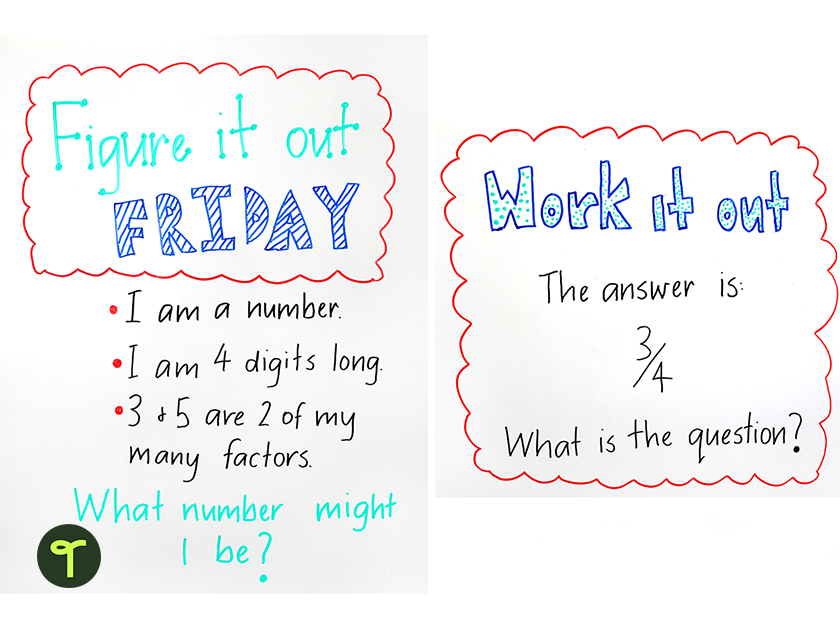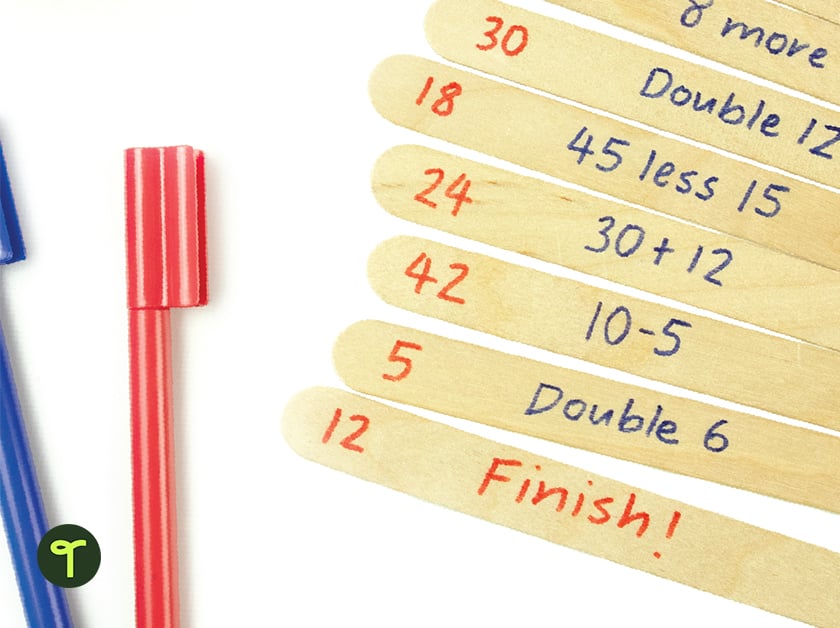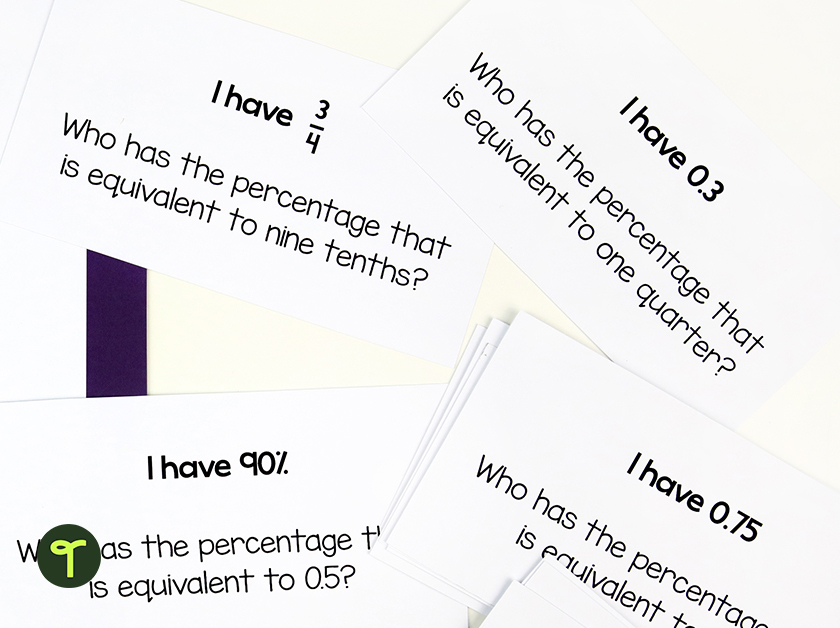Daily maths warm-ups are intended to be a quick way to loosen up a student’s brain. They are not meant to be something that is going to take a long time to organize or plan, but they’re something that can be used quickly for the whole class!
Are you looking for simple maths warm-up ideas for students to practise concepts they’ve learned in previous classes? They may still need to work on such as counting, addition, subtraction, place value, etc., but the members of the Teach Starter teacher team have put our heads together for some simple ideas that can make a real difference in getting students ready to dive deep into developing their maths skills! Read on for a look at why these warm-ups are so important, and some of our teacher team’s favourites!
Need math warm-up activities you can print right now? Skip to our maths warm-up activities collection!
The Importance of Maths Warm-Ups
You wouldn’t ask an athlete to run a race or a singer to go on stage without warming up first! Some might say that warming up your students’ maths brains at the start of a lesson is the most important part of the session. Warm-ups spark student interest before diving into your content by practising known, related information.
Reviewing familiar maths content can help students practice their base knowledge, bringing this understanding to the front of their minds so it’s ready to access when they dive into the newer, trickier stuff you’re about to teach.
Quick Maths Warm-Up Ideas for Primary School
We’ll kick things off with warm-ups you can do right on your whiteboard, then dive into number talks, circle games and a lot more to get their numerical minds working.
Maths Warm-Ups on the Whiteboard
File this under quick and easy: Using your classroom whiteboard and writing quick maths word problems on the board can be a great way to work those little minds, and it doesn’t take much more than your marker and a few ideas. Fortunately, our teacher team has plenty of those for you …
Play Who Am I using numbers
I am a number. I am 4 digits long. 3 and 5 are 2 of my many factors. What number could I be?
Work it out – the answer is… what is the question?
The answer is 3/4. What is the question?
Use numbers to get an answer.
The answer is 345. Use these numbers to work out a number of questions — 10, 3, 4, 5, 2, 1, 100.
Balance an even group of numbers using addition.
Use addition to balance these numbers so both sides are equal — 56, 38, 22, 16, 6, 40, 24, 27, 19, 32.

Make a number using different methods and provided numbers.
Make 126. Use all of the numbers (200, 5, 4, 2, 6) to arrive at an answer of 126. You can use addition, subtraction, multiplication, or division, but each number may only be used once.
Guess the Number
This is a fun maths warm-up that can be played as a whole class or in groups of three. Students stand up and without looking at the other player’s numbers, write a number between 2 and 9. The third player calls out the sum of the numbers, and the winner is the person who can figure out what number the other player has first. This can be differentiated for students by increasing or decreasing numbers or by having the third player find the product instead of the sum.
Number of the Day
Write a new number on the board each day, and make it a daily practice for students to interact with the number in a number of ways — you can use equity sticks and call on students one by one to give you a number that is ‘more’ or ‘less’ than the number of the day. You can also ask one student to identify if the number of the day is odd or even, then call on other students to tell you another number that is odd or even!
Number Talk Activities
Number Talks are short, daily activities that allow students to have meaningful and highly engaging conversations about mathematics. Show students the front of the card, and ask the prompts on the back. These exchanges will lead to the development of more accurate, efficient and flexible strategies for students!
Explore our teacher team’s favourite number talk resources — from volume to measurement and beyond!
Play Around the World
Around the World is a quick and easy maths warm-up idea for your classroom, and it can be changed to suit whatever you may be learning in the classroom. Also, if you feel your students need some outdoor fresh air – you can easily take this activity outside.
Here’s How to Play Around the World:
- Students sit in a circle.
- One student is picked to stand behind the class member next to them (these two students will play first).
- The teacher asks a question such as, what is double 5?
- The student who answers correctly first moves ‘around the world.’
- If the winner is the student standing, they simply move to the next student sitting down.
- If the winner is the student sitting down, they stand and move around the outside of the circle.
Math Warm-Up Poster Activities
Working on multiplication? These multiplication tummy filler posters are a lot of fun and an easy way to get kids thinking about how multiplication helps us expand numbers!
Choose a gorilla, panda or monster poster template to print. The number of copies made will depend on the multiplication number sentence being discussed. For example, if the number sentence was 3 x 4, three copies of the gorilla could be displayed.
Students then attach four concrete objects to each of the gorillas’ tummies. The concrete objects, which could be attached with sticky tack, might include linking cubes, match sticks, counters, etc. These objects represent the number of things eaten by the character. Write the matching repeated addition sentence below each gorilla, e.g., 4 + 4 + 4 — on your whiteboard!
Large Paddlepop Stick Ladder Activity
This idea is gold! Yes, it takes a little time with the initial making of the activity, however, no time to set up once it has been created. If you can, make a class set of paddlepop sticks so that each student has their own each time or can work in pairs.

The basic concept is that students get handed the full set, and they begin with the craft stick that has the word start written on it, working all the way to the finish line. They must find the matching answers to the math questions until all of the craft sticks are in order.
Math Warm-Up PowerPoints
Using a variety of different methods for each day’s math warm-up keeps it interesting for your students. Having a bank of different interactive PowerPoints (or Google slides) is another fantastic way to get those little minds thinking mathematically!
We have a variety of curriculum-aligned maths interactive PowerPoints, covering a range of topics including; place value, money, and multiplication and division.
Our Number of the Day Warm-Up PowerPoint is the perfect addition to your maths warm-up collection. All you need is a chosen number, and there are more than 20 different activities included in the PowerPoint. Easily change the level of this math warm-up by changing the number used.
‘I Have, Who Has’ Maths Game
There are so many different variations of this game, and you can keep track of how quickly the class gets through the cards to keep kids wanting more — they kept wanting to beat their record time.
The student that has the sentence ‘I am the starter’ begins the game by standing up and reading their card. Once they have read their clue, the student that has the matching number on their card stands up and reads what is on their card. The game continues until the last person reads out ‘I am the last number!’
The best part about this is that once you have printed and laminated these game cards, you can use them again and again! Perfect!
Use a Deck of Cards
The old faithful deck of cards can be used in a multitude of ways to get students’ brains warmed up for a math lesson. Here’s just one simple way you could use a deck of cards — project our printable place value mat onto your interactive whiteboard, then, randomly pull out four cards from your deck of cards.
Here’s what you can get your students to do with the four cards:
- Students make the largest number they can with the four numbers.
- Make the smallest number they can with the four numbers.
- Get students to add the four numbers together.
- Students pick two numbers to create a fact family tree.
Number Charts for the Win
Utilizing hundreds boards and number charts is another simple way to get your students’ mathematics brains active. Use our Numbers 21-130 charts in a variety of ways. Print the black and white versions, and laminate them so they can be used again and again.
Here are some activity ideas:
- Get students to fill in the gaps on the hundreds board.
- Have students circle all of the even numbers on the first row in green.
- Then ask the students to circle all of the uneven numbers pink on the second row.
- Get students to close their eyes and point to a number – that is their number of the day and they can fill out our Number of the Day worksheet.
The options are endless with a number chart!









Hi, Just wondering if anyone was able to solve the following problem from above - Use addition to balance these numbers so both sides are equal – 56, 38, 24, 32, 18, 19, 40, 6, 16, 22. Given that they all add up to an odd number, we figure it is impossible to balance them evenly... Have we misunderstood the question? Thanks!
Ok
you need to swap the 19 to be a 20 and it works :-)
Hi Paula, can you please specify which resources you may be referring to? That way we can answer your question with all of the correct information. Many thanks!